Jim Huylebroek / Save The Children
KEY MESSAGES
Girls have closed or reversed gaps in education access and completion. Gender gaps in enrolment and attendance have been declining over the past 20 years with less than one percentage point gender gap remaining in all three levels of education. Sub-Saharan Africa is the furthest from parity at the expense of girls with no progress since 2011 at the lower secondary level and since 2014 in upper secondary.
New analysis shows that, globally, at each education level, females enjoy an advantage of two percentage points in rates for those completing on time. There remain significant gender gaps among those who complete at a later date, however, particularly in sub-Saharan Africa, and particularly in secondary education.
Girls outperform boys in learning in general but are not among top performers in mathematics. Girls outperform boys in reading in primary education, an advantage that increases with age. They also outperform boys in science in secondary school in middle- and high-income countries. Boys perform better than girls in mathematics. Their advantage shrinks with age yet they are more likely to be among the highest performers in mathematics. Girls perform better in mathematics in more gender-equal societies, and where more girls study STEM subjects in tertiary education. When girls perform well in mathematics and science, they perform even better in reading. This may be one reason why girls are less likely to opt for STEM careers.
Women are increasingly attracted to tertiary education. In tertiary education, men are furthest behind in all regions except sub-Saharan Africa where 76 women are enrolled for every 100 men. Yet extreme gender gaps can still be found at the expense of both men and women. Only 47 women in Benin, 55 in Burkina Faso and 60 in Ethiopia are enrolled for every 100 men. Meanwhile only 40 men in Tonga and 14 men in Qatar are enrolled for every 100 women.
Women are still more likely to be illiterate when adults than men. Among adults, there is a gender gap in literacy of 7 percentage points, falling to 2 percentage points among youth. In rural areas, women are even further behind. In sub-Saharan Africa, more than one in four young women are still illiterate.
Teaching is increasingly a feminine profession. The share of women in the teaching force increased from 92% to 94% from 2000 to 2020 in pre-primary education and from 59% to 67% in primary education. Sub-Saharan Africa is the only region where less than half of primary teachers are female. Women make up only 32% of teachers in secondary education.
Women often pay the price for weak public provision of ECCE. Private institutions in 33 high-income countries accounted for 57% of total enrolment for children under 3 in 2018. ECCE provision is often provided in homes; unequal gender norms mean women perform more than three times more unpaid care work than men. This also affects the childcare workforce: only 7% of the EU workforce are men.
Non-state actors often preserve gender barriers in primary and secondary education. Globally, there are slightly more boys than girls in private institutions in primary and secondary education. In South Asia, a prevalence of boys in private schools likely reveals biased gender preferences; in Central and Western Africa a prevalence of girls reflects the presence of single-sex private schools.
Non-state faith-based schools have been vital for girls’ education but teaching has been found to reinforce gender unequal norms and attitudes. Curricula and textbooks as well as teaching and learning practices can reinforce discrimination. A study of female secondary school and madrasa graduates found that the latter held less favourable attitudes towards higher education for girls and working mothers. There is a lack of regulation over gender-based violence in many faith-based schools affecting both girls and boys.
Women-only universities have increased women’s access and opportunities, although they remain a option. Women’s universities have educated an outstanding number of women in STEM fields, notably in the United States. Some have evolved into teacher-training institutes, and continue to educate large numbers of future teachers. Yet in some countries they have been targeted by those opposed to women’s education.
Many projects for girls’ education rely upon NGOs for implementation and locally tailored solutions. In 2021, the first private school for young mothers opened in Nairobi, Kenya, to provide a stigma-free space for girls. NGOs also support remedial learning for girls at risk of dropping out, particularly critical during the COVID-19 pandemic. In India, Room to Read, supported learning continuity for adolescent girls.
NGOs support girls’ education in emergencies. They have the flexibility, responsiveness, adaptability, capacity and expertise required. In Afghanistan, community-based education for younger children is mostly implemented by NGOs to ensure learning continuity since August 2021 when the Taliban returned to power.
Non-state actors have strong influence over gender equality in education outside of provision. Through advocacy, school and career counselling and NGO activities, multiple areas critical to girls’ access to schools can be influenced, including menstrual hygiene management, and support for comprehensive sexuality education.
Teacher unions are critical advocates for teachers’ well-being. Unions are the guardians against gender-based violence, advocates for codes of conduct, and can support or deny the represent of female leaders in trade union structures. Latin American unions are campaigning to promote the ratification of ILO Convention 190 on eliminating violence and harassment at work.
